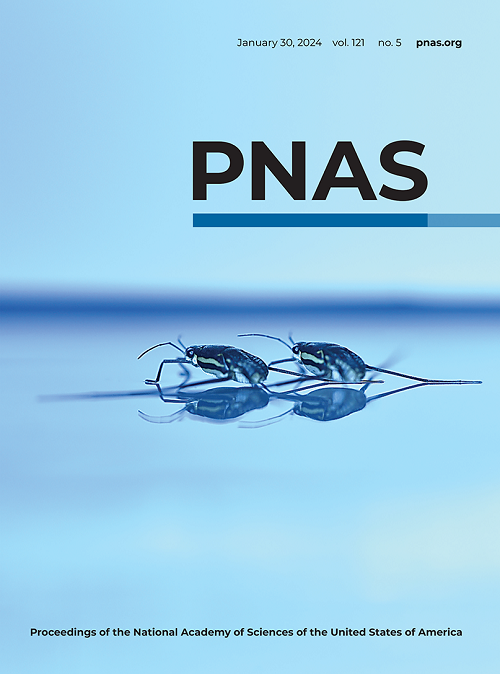Global urban greening and its implication for urban heat mitigation.
IF 9.4
1区 综合性期刊
Q1 MULTIDISCIPLINARY SCIENCES
Proceedings of the National Academy of Sciences of the United States of America
Pub Date : 2025-01-21
DOI:10.1073/pnas.2417179122
引用次数: 0
Abstract
Urban vegetation provides essential ecosystem services and benefits to support biodiversity and human well-being in urban areas. However, the dynamic trends, driving factors, and their implications to urban heat mitigation at the global scale remain largely unclear. Here, we used a high-resolution enhanced vegetation index (EVI) dataset to examine the vegetation dynamics in 11,235 urban areas worldwide, identify the driving factors behind its changes, and estimate the potential urban heat mitigation benefits of these changes. We found that 40.75% urban areas (1.51 Mha) evidenced a greening trend (showing increasing EVI), in contrast to 49.60% urban areas showing browning (decreasing EVI). Notably, urban centers in both developed and developing countries contribute to this greening trend. We, nevertheless, found significant spatial disparities in this greening trend, with cities in the Global North showing higher greening ratios than those in the Global South. The driving factors of urban vegetation change trend lead to significant differentiation in and around urban areas. The rapid increase in urbanization intensity and the negative effects of nitrogen deposition are the dominant factors leading to vegetation browning in urban peripheries. However, nitrogen deposition and urbanization intensity have shown positive effects on vegetation greening within urban centers. Crucially, compared to areas with vegetation browning or no significant change, vegetation greening areas have a more significant cooling effect, potentially mitigating the urban heat island effect, especially during summer daytime. Our findings highlight the importance of enhancing urban vegetation greening to promote equitable urban development and ensure effective climate change mitigation.全球城市绿化及其对城市热缓解的意义。
城市植被提供基本的生态系统服务和效益,支持城市地区的生物多样性和人类福祉。然而,全球范围内的动态趋势、驱动因素及其对城市热缓解的影响在很大程度上仍不清楚。本文利用高分辨率增强植被指数(EVI)数据集研究了全球11,235个城市地区的植被动态,确定了其变化背后的驱动因素,并估计了这些变化的潜在城市热缓解效益。结果表明,40.75%的城区(1.51 Mha)呈现绿化趋势(EVI增加),49.60%的城区呈现褐变趋势(EVI下降)。值得注意的是,发达国家和发展中国家的城市中心都对这种绿化趋势做出了贡献。然而,我们发现这种绿化趋势存在显著的空间差异,全球北方城市的绿化比率高于全球南方城市。城市植被变化趋势的驱动因子导致城市内部和城市周边存在显著的分异。城市化强度的快速增加和氮沉降的负面影响是导致城市外围植被褐变的主导因素。氮沉降和城市化强度对城市中心区域的植被绿化均有正向影响。至关重要的是,与植被褐变或无显著变化的地区相比,植被绿化区具有更显著的降温效应,可能缓解城市热岛效应,尤其是在夏季白天。我们的研究结果强调了加强城市植被绿化对促进城市公平发展和确保有效减缓气候变化的重要性。
本文章由计算机程序翻译,如有差异,请以英文原文为准。
求助全文
约1分钟内获得全文
求助全文
来源期刊
CiteScore
19.00
自引率
0.90%
发文量
3575
审稿时长
2.5 months
期刊介绍:
The Proceedings of the National Academy of Sciences (PNAS), a peer-reviewed journal of the National Academy of Sciences (NAS), serves as an authoritative source for high-impact, original research across the biological, physical, and social sciences. With a global scope, the journal welcomes submissions from researchers worldwide, making it an inclusive platform for advancing scientific knowledge.

 求助内容:
求助内容: 应助结果提醒方式:
应助结果提醒方式:


